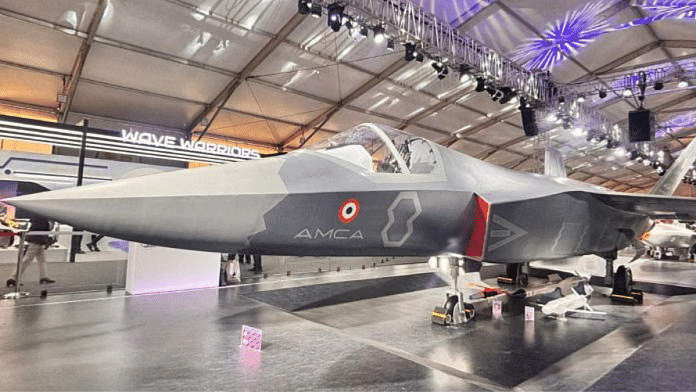New Delhi: It was supposed to break the monopoly of the state-run Hindustan Aeronautics Limited (HAL) and open up the Indian aerospace sector to private companies. However, ahead of the pre-Expression of Interest (EOI) meeting to be held by the Aeronautical Development Agency (ADA) Friday, private companies allege the whole process is heavily tilted in the favour of the HAL.
The ADA had 18 June taken a major step towards developing indigenous fifth-generation fighter jet, the Advanced Medium Combat Aircraft (AMCA), by inviting Expression of Interest (EOI) for its prototype development.
This marked a historic shift in defence procurement and industrial participation policy since this meant that HAL will have to bid along with private companies to bag the contract.
In normal circumstances, HAL would have been the natural production partner for the AMCA project just like in the case of Tejas or license production of the MiG and the Su-30 MKI fighters in India.
“The Execution Model approach provides equal opportunities to both private and public sectors on a competitive basis. They can bid either independently or as joint ventures or as consortia,” a defence ministry statement released 27 May said.
However, with the EOI now formally issued to interested parties, industry sources said HAL will tie up with one or two companies and win the contract. They contend that no Indian private company can win this AMCA contract on their own because of the “stringent qualifying criteria”.
The sources said that the EOI states that an Indian company (Single or JV/Consortium) needs to be owned and controlled by resident Indian citizens for both lead entity and JV partners.
“This means that private companies, who don’t have an experience in manufacturing a full fighter, cannot enter into a joint venture with a foreign Original Equipment Manufacturer (OEM). Even now Indian companies manufacturing parts and components are doing so in collaboration with foreign OEMs,” one of the sources said.
A second source said that EOI states that all key managerial positions including but not limited to CEO, CFO, COO and the entire Board of Directors shall be held by individuals who are resident Indian citizens. This means, the source added, that no private company can actually hire a foreign talent at the top to spearhead the venture.
The sources also pointed out that annual turn-over of the single/lead company shall have minimum Rs 2,000 crore in the last three financial years (FYs). Also, the non-lead partner should have a minimum annual turnover of Rs 200 crore for the last three FYs.
The only company which fits this criteria is HAL, they said.
In the case of a JV/consortium, the maximum share of the lead company should not be more than 50 percent and the total number of partners allowed is three. The EOI also states that positive net worth in the last three FYs for single/lead entities as well as non-lead partners.
The sources also alleged that the scoring marks for each criteria is also tilted in the favour of HAL whether as a single entity or as a joint venture with one or two private firms.
“The original plan before the EOI was mentioned was HAL will be the lead integrator and will outsource a lot of production to three-four private firms. This includes wings, fuselages and other parts with HAL becoming the lead integrator. This is exactly what is going to happen now. No private company will be winning this contract as the lead agency,” one of the sources cited above said.
(Edited by Tony Rai)
Also Read: Safran to set up Rafale engine maintenance & repair facility in Hyderabad, 1st outside France






